How Copywriter Bob Bly Submits Ad Copy To Graphic Designers
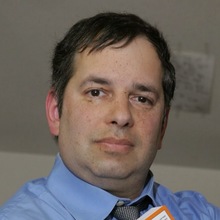
I’ve learned so much from Bob Bly over the years. When I was just starting out as a copywriter and marketing consultant, one of his most helpful products was “The Copywriter’s Toolkit.” I learned how to submit copy from studying this work and his class book, The Copywriter’s Handbook.
Every print ad has two main components. First, there is the layout and images of the ad which is created by the graphic designer. Second, there are the words used in the headline, body, and call to action of the ad.
Bob Bly describes how he submits his copy copy in his article below. In my case, I write the copy and submit it to my graphic designer who happens to be my wife Kathleen. In your case, you might write up an ad and then submit it to the graphic design department of your local paper, magazine, or even the Yellow Pages. By submitting your copy, i.e. words, this way, you’ll help the graphic designer and create a better ad with fewer changes.
Bob ends his letter with an offer for one of his ebooks. I get no affiliate commission for this. I help you learn more about marketing and hopefully Bob will get some sales of this great product.
Dear Direct Response Letter Subscriber:
Subscriber BM writes:
“Bob, can I ask a dumb logistical question? How exactly do you submit your copy? And in what form? In a word Doc? PDF?
“Do you format the copy exactly as you envision it, down to the headline font and size? And what about images and charts and
things like Johnson boxes?
“Do you dictate how things look graphically or just submit the raw text for everything? Just curious about that.”
So let me briefly provide the straightforward answers to these questions, which are anything BUT dumb:
1–I submit copy to clients as a word file, single-spaced, sent via an email attachment.
2–The body copy is in 12-point Times Roman. Headlines are 14-point Arial bold. Subheads are 12-point Arial.
3–If there are graphics, I cut and paste the image into my Word document directly from the source material (e.g., Powerpoints, white paper PDF documents, websites) whenever possible, with the source referenced in a footnote.
4–If the source material is copyrighted content owned by my client, I assume they can use the visuals as is.
5–If the source is copyrighted material belonging to someone else, I still cut and paste it with a footnote into my document, but alert the client that they must either obtain written permission to use it or redraw it so as not to violate copyright.
6–I often include in the Word document for my copy some “copywriter’s roughs” — crude layouts, drawn in Microsoft Word. Note: I have collected my layout templates in a kit you can buy; see my PS below for details.
7–I clearly indicate what is a headline, subhead, or body copy; provide images for guidance; and either give layout instructions in text [in square brackets] — or using my copywriter’s roughs (see #6 above).
But, I do NOT “dictate how things look graphically,” format the copy in final form, or do a finished graphic design or layout of any kind.
Instead, I provide sufficient “art direction” (layout suggestions) so that the graphic designer can produce a finished layout that will work in print or online.
I will also, at no charge, review the layout, often several times, as it is being developed by the graphic designer and made final by them and the client.
But I do not try to tell the graphic designers how to do a job for which they are better skilled and suited than I am.
Sincerely,
Bob Bly
P.S. For more information on how you can get a collection of ready-to-use graphics templates for promotional layouts — everything from sales letters and postcards, to ads and landing pages — or to use it risk-free for 90 days — click here now:
Bob Bly
Copywriter / Consultant
31 Cheyenne Dr.
Montville, NJ 07045
Phone 973-263-0562
Fax 973-263-0613
www.bly.com
7 Ways To Write a Great Headline
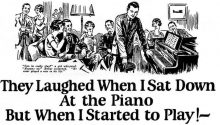
When you write great headlines, you improve the results of every advertisement, flyer, invitation, press release, client letter, and email you write. Remember that 73% of the buying decision is made at the point of the headline. And “buying” can mean opening the email message, listening to the rest of the TV or radio ad, reading the rest of the newspaper advertisement, buying the product or registering for a community seminar. So let’s spend some time looking at proven ways to create great headlines.
Ted Nicholas has written books selling over a million copies including How To Form Your Own Corporation For Under $75 . Ted recommends writing the headline first before writing any other part of the ad. He starts out by listing every possible benefit he can think of. Next he turns benefits into headlines and writes as many as he can think of. Sometimes as many as 200 for one product! Once you’ve settled on the main headline you can start putting together the rest of the ad. You can use the “runner up headlines” as “sub-headlines” to highlight other advantages of the product or service.
Remember that your headline must speak to a want, need or desire of your prospective customer. This is the big benefit that your product or service offers.
Now let’s look at 7 ways to write a great headline.
- Add the words “How To” to your existing headline. Tests using the exact same ad with only these 2 words added to the headline increased results by 17%. I did this with a headline for living trust seminars beginning with “Avoid Probate…” and made it “How To Avoid Probate…” and improved results. People are looking for solutions to problems and they want to know “how-to” do something.
- You can offer to fill a gap in the marketplace with the words “Finally,…” or “At Last, You Can…” These headlines build curiosity because you may solve a problem they’ve had for a long time. “At Last, You Can Stop Worrying About Your Retirement”
- Everyone hears “No” from parents, teachers, bosses, so hearing “Yes” gets them to stop in their tracks. “Yes, You Can …”
- Using a client testimonial can create a great headline by adding credibility and personalizing the product or service. Here’s a classic “testimonial” type ad written by copywriting ledgend John Caples: They Laughed When I Sat Down At the Piano But When I Started to Play! —
- Ask a question: “Tired of Waiting For the Phone To Ring?” or “Worried About Running Out of Retirement Money?”
- Two words, “Free” and “New”, are proven to grab attention: “Free Report On Avoiding the 5 Most Common Mistakes of Retirement Planning” and “7 New Ways To Hire Better Employees” Both of these headlines have a number in them. For some reason odd numbers of lists work better. The exception to this rule is “Top 10” lists which work well.
- Try to dig deeper and uncover the “hidden benefit” of your product, seminar, or service. Ted Nicholas used “The Ultimate Tax Shelter” as the headline for selling 200,000 copies of his book on setting up your own corporation. Yes, this single ad generated over $4 million in book sales. Yet the book itself didn’t use the phrase “tax shelter.” He says that the “tax shelter possibilities are why many people form corporations.”
When you see the same exact ad running again and again in your local paper or in a magazine, you know it must be working. And a great headline is the number one reason an ad will work again and again. Folks see the ad, read the headline and then the rest of the ad and finally take action.
Now take a look at your own ads and see how you can improve the headlines.
How To Write an Effective Advertisement
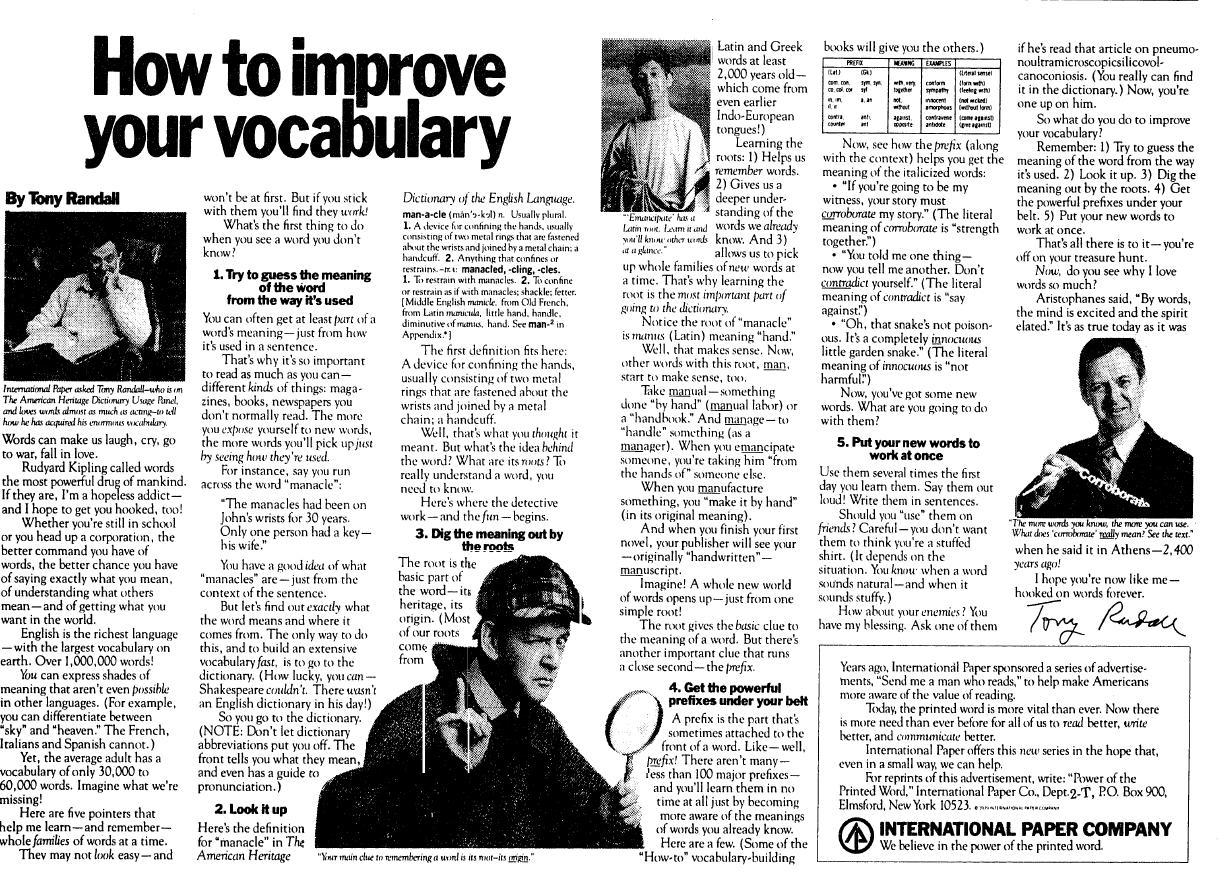
You begin the process of creating an effective ad by thinking of one of your best clients, a wealthy widow by the name of Sally Jones. You write the ad for Sally so your ad will speak to Sally and people like her.
You absolutely do not want to design the ad to please yourself. As author Jerry Reitman wrote, “Bait the hook to suit the fish, not the fisherman.” One of you is enough! You want more Sally’s so your ad should speak to Sally and get people like Sally to take action.
Over the years, successful writers have developed copywriting formulas which produce effective ads, TV commercials, and sales letters. I first learned about the “AIDA” formula in 1989 from marketing expert, Jay Abraham.
AIDA stands for attention, interest, desire and action. Your ad must get the buyers’ attention, build interest in your product or service, create desire to own that product or service, and finally ask the viewer or reader to take action to get that product or service.
Attention
You get your reader’s attention with a powerful headline. This is the key.
Ted Nicholas became famous selling his best selling book, How To Form Your Own Corporation Without An Attorney For Under $50. He spent hundreds of millions of dollars promoting this and other books in full-page magazine ads. He says that “73% of the buying decision is made at the point of the headline.”
Without a powerful and persuasive headline, your ad copy won’t be read. Your offer won’t be considered. You’ll waste your money.
So what should a good headline do? In Bob Bly’s The Copywriter’s Handbook, he describes the four functions of a headline:
- Get attention. This gets the reader to read more of the ad.
- Select the audience. Who do you want to attract? Who would you rather not attract?
- Deliver a complete message. David Ogilvy, author of Confessions of an Advertising Man, says that 80% of readers will only read the headline. Headlines like “Merrill Lynch Is Bullish On America” at least let the reader know the name of the company.
- Draw the reader into the body copy. The promise of solutions to current or potential problems gets the reader to continue reading more of the ad.
Let’s consider these four functions as we look at a few headlines.
“How To Win Friends and Influence People”
Dale Carnegie wrote this best-selling book during the 1930‘s. The book’s title served as the headline for ads selling the book. This headline grabs the reader’s attention and builds curiosity because who doesn’t want more friends? So this headline/title does #1 and #4. In a way, it selects the audience (#2) because everyone wants more friends.
“Did Your 401(k) Become a 201(k)?”
This headline grabbed attention (#1) by dramatizing a 50% fall in the stock market. It selected the audience (#2) by assuming the reader had a 401(k). It pulls the reader into the copy (#4) because it implies a solution to the problem of a falling retirement portfolio. While powerful, it missed on #2 by not offering a solution to the problem. I suppose “Turn Your 201(k) Into a 301(k) With Chinese Growth Stocks” would fulfill #3 but only testing would show if it was as effective.
“Worried About Outliving Your Retirement Funds?”
This headline grabs attention (#1) by pointing the pain of running out of money during retirement. It selects the audience (#2) advisors want to reach because pre-retirees and retirees worry about this; 25 year-olds don’t give it a thought. It can’t deliver a complete message because the problem will differ greatly from person to person. Yet it raises a real concern during times of rising prices and low interest rates and draws the reader into the rest of the ad (#4).
The most common mistake in advertising is using your business name at the top of the ad as the headline. Look at all the ads in the yellow pages or your local paper. How many put the company name the top in big letters? Most. Use a powerful and compelling headline and you’ll have far more effective ads. Why? Because your prospects will read on….
Interest
Next, you need to build interest in the reader for your service or product. Keep the reader interested by providing more facts which show in words or imagery you can deliver on the promise made in the headline. Pile on multiple benefits that will improve their lives.
Validate your claims by offering proof you can deliver on your promises. This proof can include references to your education, certifications, and years in business. Perhaps you’re a radio show host or have written articles in your local paper or other major publications.
Include some client testimonials and let your customers praise you in print. In local markets, this provides powerful proof that you will deliver what you’re promising.
Desire
You build up desire by helping them imagine how they’ll feel after buying your product or service. Your product will make their life better and more enjoyable. Whether it’s a night on the town or a better retirement. you want your prospect to want what you have to offer.
You should offer the best guarantee you can. You can also build desire by offering additional free bonuse or limited time offers.
And how do they fulfill their desires? By accepting your offer….
Action
Finally, you need to close the deal and get the reader to act now and accept your offer. You want them to take an action step to get them to your website or place of business.
Your offer will differ depending on the ad placement. Yellow pages ads run all year long so the offer might be for a free report on “The 7 Most Common Mistakes and How To Avoid Them.” An advertisement for a no obligation tax planning analysis would work during tax season. Yet an ad for a free community seminar will only work a week prior to the event.
In a previous article, I wrote about giving away free information. Just remember that you need to offer your prospect something of value so they’ll contact you.
Your offer ends with a call to action. “Call our office today to receive your free report.” Or “Visit our website to get all the details and find out how they can get a free sample..”
At the bottom of your ad you can include your company name, address and contact information. Make it easy to read so they can take action and get a hold of you.
In my next article I’ll look show you some more ways to create effective headlines.
Kickstart Your Marketing With a USP and Set Yourself Apart
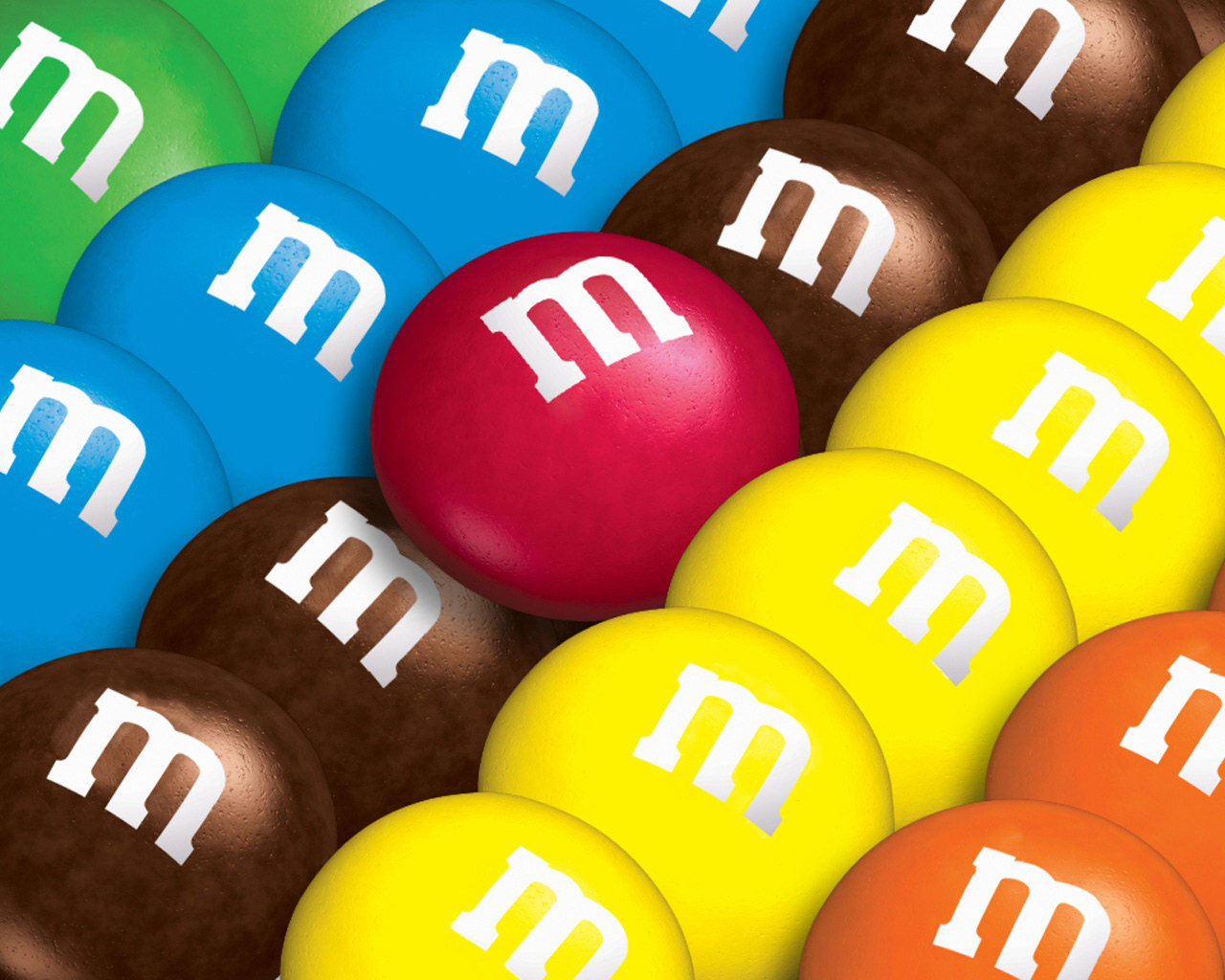
Every business and business professional should have a “USP” which stands for “unique selling proposition.”
Without a USP your advertising will have a plain vanilla, me-to appearance which won’t lead people to take action. When you have a good USP and deploy it in your advertising, you’ll attract more clients like you want. You’ll also keep away folks who aren’t your targeted clientele.
Rosser Reeves invented the term “USP” in the 1960’s. In his book, Reality in Advertising, he defines what makes a good USP:
1. Each advertisement must make a proposition to the consumer. Not just words, not just product puffery, not just show-window advertising. Each advertisement must say to each reader: “Buy this product, and you will get this specific benefit.”
2. The proposition must be one that the competition either cannot, or does not, offer. It must be unique—either a uniqueness of the brand or a claim not otherwise made in that particular field of advertising.
3. The proposition must be so strong that it can move the mass millions, i.e., pull over new customers to your product.
Here are some well known examples which meet this 3-part definition:
Domino’s Pizza: “You get fresh, hot pizza delivered to your door in 30 minutes or less — or it’s free.” Notice it says nothing about Mama’s recipe, taste, or low price. This created a whole new market at a time when it took 30 to 40 minutes to get a pizza at pizza restaurants.
FedEx: “When your package absolutely, positively has to get there overnight” This USP answered the question, “Why would anyone want to pay ten bucks to mail a letter?”
M&M’s: “The milk chocolate melts in your mouth, not in your hand” Rosser Reeves created this USP over 40 years ago and it still works great.
Wonder Bread: “Wonder Bread Helps Build Strong Bodies 12 Ways” Maybe it does, maybe it doesn’t. It sure sold a lot of bread.
Did it occur to you that 3 of these 4 USP’s are no longer used by their companies? I had to look up Wonder Bread and found they use “Soft. Delicious. Nutritious.” Fed Ex does a lot more today than overnight delivery so they use “Save more as you ship more, Think FedEx First.” Pizza Hut’s website emphasizes that it wins national taste tests.
You also need to remember to use your USP in all your ads and in contact with customers and prospects. I noticed in the fine legal print on Domino’s home page:
Domino’s new hand tossed pizza has been reinvented from the crust up to be our best tasting pizza ever. Guaranteed. If you are not completely satisfied with your Domino’s pizza experience, we will make it right or refund your money.
This should be in BIG print in the headline of the webpage. 99% of web visitors will miss this. Guarantees are a great way to create a USP.
Your USP should be visible and become part of your daily operations…not just something for your advertisements or website. Let me give you an example.
My mom came across a letter written to me back on April 23, 1976. I had written to M&M-Mars after getting some red, green or brown coloring on my hands while eating some M&M’s. I can’t remember what motivated me to write them. Maybe it was school assignment. Maybe I was just being a wise guy. Here’s their reply:
Dear Richard:
Thank you for your letter and your interest in M&Ms Chocolate Candies.
In our advertisements we say: “THE MILK CHOCOLATE MELTS IN YOUR MOUTH – NOT IN YOUR HAND”. The melting to which you referred was undoubtedly caused when the pure food coloring in the thin sugar shell came in contact with the moisture in your hands. This sometimes happens if the candy is held for a while.
The objective of our advertising is to acquaint consumers with the fact that M&Ms Chocolate Candies are neat to eat and do not have the mess of other chocolate products that do not have thin sugar shells protecting the chocolate centers.
Thank you again for your interest in writing to us.
Very truly yours,
(Miss) Eleanor C. Trautwein
Customer Service Manager
Now let’s talk about USPs for business professionals. Your USP should answer the question, “Why should someone choose you as their advisor over all other advisors in your area and instead of doing it themselves?”
Obviously, you can answer this question in numerous ways. Let’s categorize them as good, bad and ugly.
Let start out with “ugly” USPs for business professionals.
Ugly ones will get you in trouble with your compliance department. This may affect you if you are a financial advisor, insurance agent, CPA or tax professional. For instance, Montgomery Ward first used “Satisfaction guaranteed or your money back” in 1874. Worse yet, “Retire as a millionaire…” These sound lame because compliance departments don’t like anything which is promissory in nature. FINRA won’t let advisors use client testimonials so that eliminates a lot of ideas for USPs. Your industry standards will set boundaries on what you can say.
Next, what makes a “bad” USP for a professional?
Something vague or a cliche like “Quality Service. High Standards.” Every one can say this so why bother? If your client or prospect reads something and says “So what?” or “Duh. Every advisor does that” then you know you need to work harder. I see this all the time with advisor websites which use the boilerplate verbiage provided by the website company.
What makes a good USP for a professional?
A good USP describes who you are, what makes you different and tells your story in a way that sells your prospect on your ability to get the job done for them. So an advisor’s USP should be more of a core story than a tagline like Walmart’s “Save Money. Live Better.”
You shouldn’t put too much weight on your designations. There are over 50,000 CFP’s in the United States. Many advisors argue this designation is the best one to have. Few would argue that it sets them apart like it did ten or twenty years ago. Yet, how many advisors describe why they pursued the CFP certification and how it improved their ability as a planner? Plus states are cracking down on new designations these days so you wouldn’t want to build your marketing around a designation which may be on the outs in the near future. Even if you’re the only one in town with it.
How do you get started creating your own USP/core story?
Easy, just start calling up your best clients. Ask them why they initially started doing business with you and why they continue to do business with you. Something about you attracted them to you and kept them from going elsewhere. Or may be they did go elsewhere and came back to you. What did they not like about that other financial advisor?
Next, look at your own story and how you got to where you are today. You’ll want to uncover details about your life which made you the advisor you are today.
Finally weave this information together so that your own unique story is told in a way that will attract your a-list clients. Never forget you are a unique individual and the “U” in “USP” stands for “unique.” Be yourself. Don’t be bland. Stand out from your peers.
What You Can Learn from JFK About Public Speaking
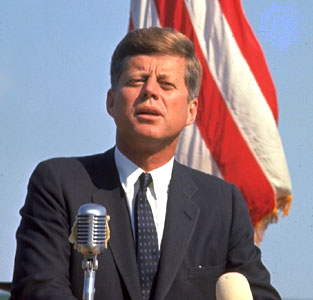
I don’t know of anyone who was born a great public speaker. In fact, most people can’t put two words together when they’re born. President John F. Kennedy was no different. He learned how to be a memorable public speaker. Read this article by copywriter and author John Forde and you’ll improve your public speaking as well.
What JFK Knew: Six Secrets You Should Know Too — by John Forde
A little after 12:30 in the afternoon, a young woman fed her seven-day-old son. They were, in fact, just two days home from the hospital.
Like a lot of young mothers, she was just then coming to grips with how much her life had already changed — when it changed again.
That was my mother and brother, on the day Kennedy was shot. Where was I? Not even an idea yet.
But growing up Irish Catholic… in definitively Democratic Philadelphia… there was no debate: Kennedy, we were all taught, had been a hero.
These days, you might not have to look too hard to find people who question that assessment. I’m pretty sure, in fact, a few would love to tear down that version of history.
But even they might have to agree, if there was one thing about Kennedy — other than his family money and his weakness for Hollywood starlets — it’s that the guy sure could deliver a great speech.
And what is a speech, dear reader, but a format-test on a kind of persuasive sales piece?
Think about it…
Kennedy knocked the cover off the ball with his “Ask not…” inaugural address. It’s been called the best inaugural speech ever given.
Kennedy did it again with “Ich bin ein Berliner,” delivered to thundering applause in West Berlin.
He also famously used words to undo the Cuban missile crisis. Not a shot was fired.
And then there’s that time he challenged America to walk on the moon, “because it’s there,” delivered in a speech he gave to the graduating class of Rice University.
The examples could go on.
But, as we close in on tomorrow, the 50th anniversary of Kennedy’s assassination, I’ll bet there are a few things you didn’t know. For instance, according to historian Robert Caro, Kennedy wasn’t always so great at the pulpit.
Says Caro…
“[Kennedy’s] early speeches… were read from a prepared text with all the insecurity of a novice, in a voice ‘tensely high-pitched’ and “with a quality of grave seriousness that masked his discomfiture . . . He seemed to be just a trifle embarrassed on stage.”
Once, goes the story, Kennedy was so nervous about forgetting a speech while he was running for Congress, his sister Eunice stood in front of the stage, mouthing the words to help him remember.
That changed with practice on the campaign trail. It also changed when Kennedy started working with his great speechwriter, Ted Sorensen, who became Kennedy’s wingman (and possibly more, though Sorensen always insisted otherwise) on all those Kennedy “moments” we still talk about now.
What also made a big difference, according to Sorensen and many others, was that Kennedy and his writing team mastered six powerful secrets rhetorical persuasion — all six of which seem worthy of using in your sales copy writing, too.
Which six? Per the BBC, Kennedy’s secret sauce drew largely from the following list…
1.) The Power of Contrasts, as in Kennedy’s famous line, “Ask not what your country can do for you, but what you can do for your country”
2) The Power of Threes, especially in lists, like in the Kennedy line, “Where the strong are just, and the weak secure and the peace preserved.”
3) The double-punch you get by combining lists and contrasts together, as in the line, “Not because the communists are doing it, not because we seek their votes, but because it is right.”
4) The Apt Application of Alliteration, as you see (and hear) in a line like Kennedy’s, “Let us go forth to lead the land we love.”
5) The Pull of Powerful Imagery, like he gave us in the simple phrase, “The torch has been passed to a new generation of Americans.”
6) The Simple, Sensible Secret of Knowing Your Audience. Kennedy’s was the first inaugural speech delivered to a global audience, in real time. And he (and Sorensen) made sure everybody knew it, with no fewer than six lines that directly addressed allies and enemies overseas.
Again, this isn’t just for speechwriters… or Presidents. These are tricks you can lean on too. Just something to think about, as the airways echo Kennedy’s words on the big day tomorrow. . . .
I’ve read John Forde’s articles for years to learn more about the art and science of copywriting. You can learn more about effective writing effective ads by signing up for his free e-newsletter. You’ll get $78 worth of free gifts as John’s way of saying thanks. http://copywritersroundtable.com
Picture credit: © Arthur Rickerby—Black Star/PNI
